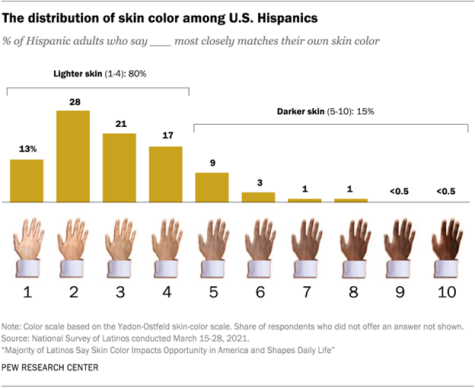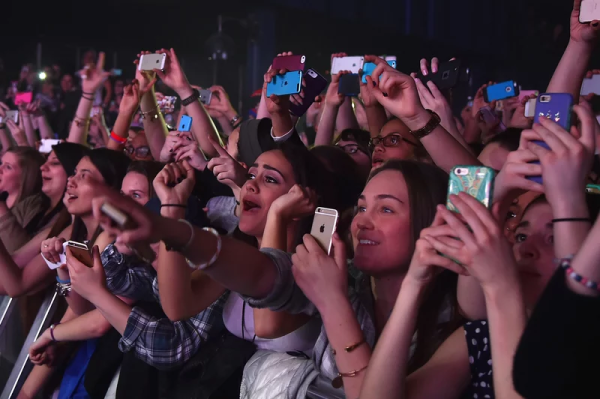Op-Ed: Why your Mexican telenovelas look white
Top Mexican Telenovelas editing their actors to look lighter on the cover their shows reveals their colorism.
“Teresa.” “Maria la del Barrio.” “Rubi.” “Mi Corazón es Tuyo.” These are some of the most popular telenovelas on Mexican television. These novelas share one thing in common — their main cast consists of European actors. If their cast does have Mexican actors, they wear makeup to appear lighter on screen and their light-skinned actors play the role of main characters while actors with darker complexion play servant or supporting roles.
In American TV, 40% of Latino characters are tied to crime. This statistic promotes harmful rhetoric that all Latinos are criminals. Then it becomes our job as Latinos to write our own stories. These telenovelas should serve as a way for Latinos to have proper representation where they are not villainized the same way they are in American television.
When Mexican television hires European actors to play the role of Mexicans, they fail to represent the Mexican community, especially those of darker complexions.
In “Teresa“, the main character Teresa is played by French actress, Angelique Boyer.
In “Maria la del Barrio“, the character known as Tita is played by Polish actress Ludwika Paleta.
While Uruguayan-Mexican actress Bárbara Mori Ochoa plays the main character of “Rubi“, her skin is lightened using editing techniques and make-up.
The best example of colorism in Mexican soap operas is in Mi Corazón es Tuyo. All the actors are played by Mexicans. The main characters are light-skinned, and the servants are the ones with darker skin. This pushes a message that only those of lighter complexions can be rich and get ahead, but those with darker skin can only live in a mansion if they are maids or butlers.
“The truth is, if we don’t write our own stories, there is someone else waiting to do it for us. And those people, waiting with their pens, often don’t look like we do and don’t have our best interests in mind.”
— Hanif Abdurraqib, They Can't Kill Us Until They Kill Us
These telenovelas are a prime example of colorism in Mexico, and it pushes this harmful rhetoric that is rooted in the time of the Spanish casta System.
Under the Spanish casta system, Native indigenous women desired to marry Spanish white men for their children to be lighter-skinned. For them, marrying white men was the only way to move up the hierarchal scale. Moving up the hierarchal scale would allow them to have a better life.
Older Mexican generations are known to be colorists to their own children and grandchildren. Telling them to marry “un gringo,” a white American, for their children to have lighter skin. Or your colorist tía, trying to sell you a skin cream that lightens your skin.
“No one ever directly said, ‘Oh you have bad hair and because you have bad hair, you’re less than the other cousin.’ But it was said like microaggressions.”
— Galván-Rodríguez, 40, Washington Post
While some show makers argue that calling them out on their shows being whitewashed is racist, they refuse to acknowledge that leaving out dark-skinned characters because it ‘doesn’t fit the aesthetic’ is colorist and racist. A study conducted by Pew Research Center shows that 80% of U.S. Latinos have lighter skin while 15% have darker skin. 62% of those with darker skin say that their skin color hurts their ability to get ahead. Actors with darker skin don’t have the same ability as light-skinned actors to be able to pass as white to get the lead roles.

For television services like Telemundo and Univision, it’s easier to appeal to the older Mexican generation than actually represent their community—to push this colorist idea that you need to look white or fit the Eurocentric-centric beauty standards.
As viewers, we should support telenovelas that show characters with both darker and lighter skin tones. It is unacceptable to exclude those of darker complexions. We need to create a community that is accepting of all Latinos, because if we don’t, we’ll just continue to push colorist stereotypes and prevent many people from getting ahead in life.
Your donation will support the student journalists of Carnegie Vanguard High School. Your contribution will allow us to cover our annual website hosting costs and fund field trips, competition fees, and equipment. We appreciate your support!

Judith Carrizales is a junior at CVHS. She participated as a member of the Film, Riot, and WISE clubs. Her favorite subjects are Journalism (of course!)...











